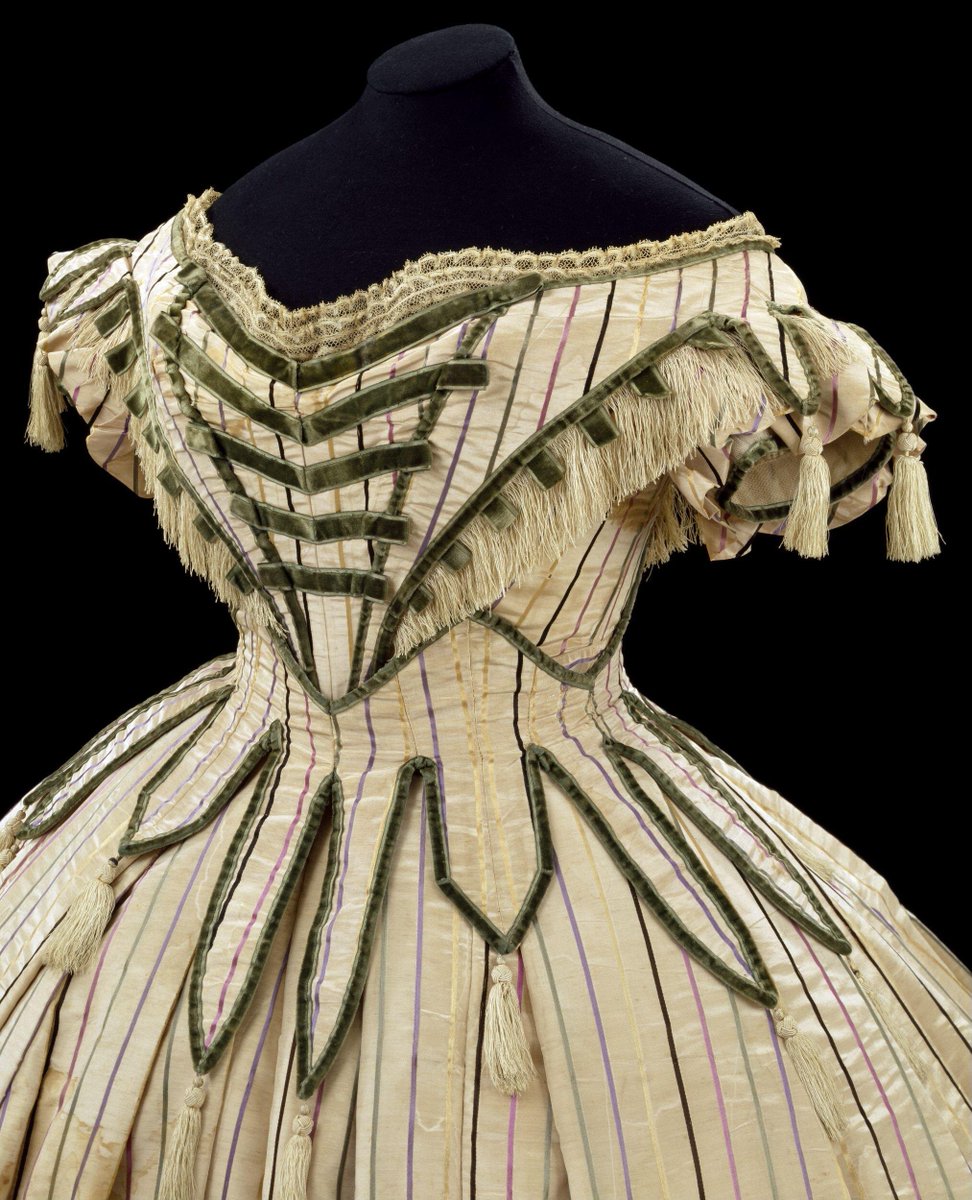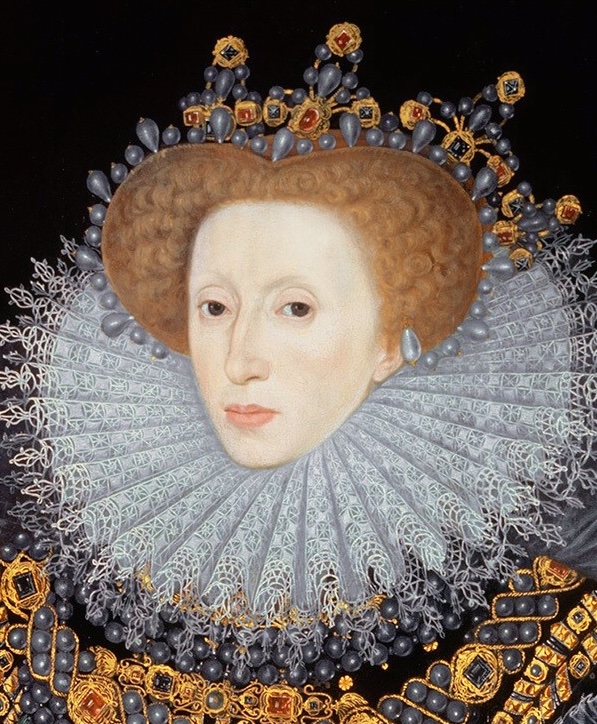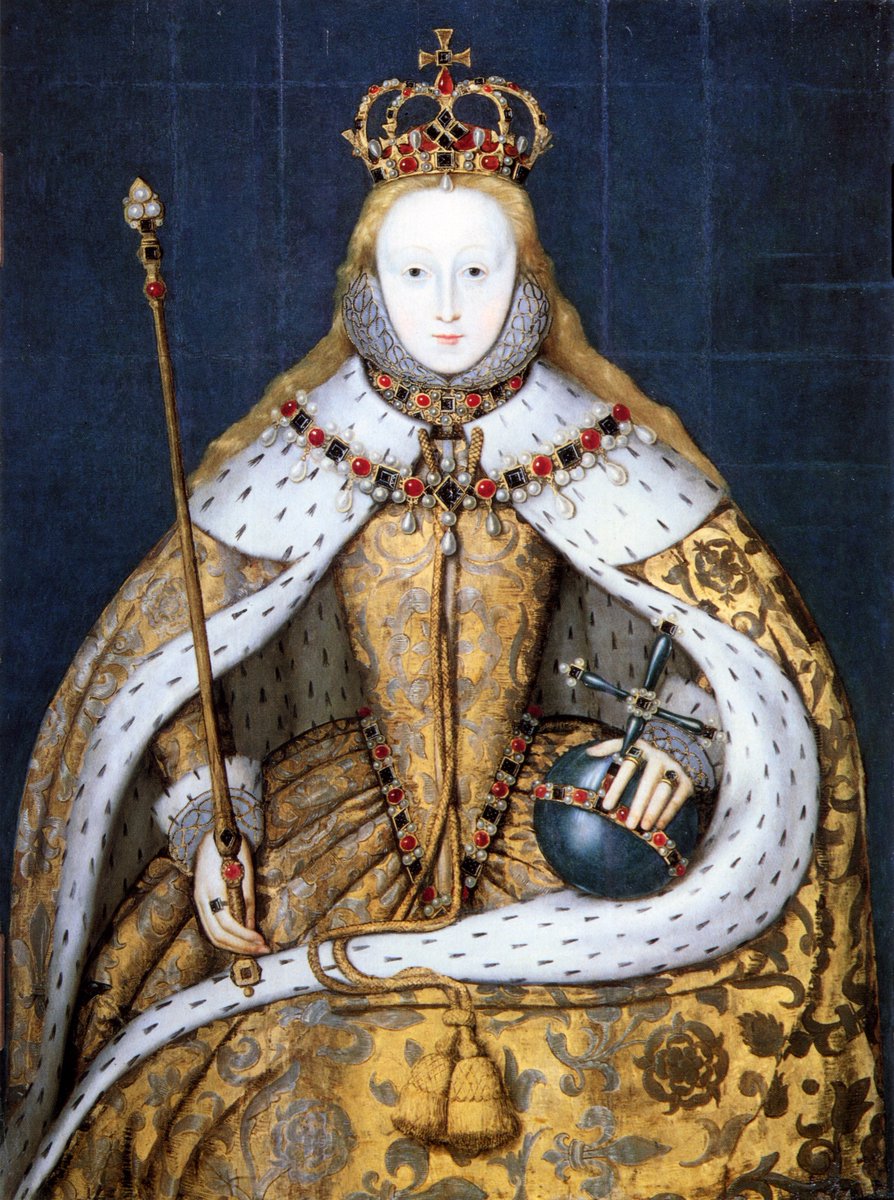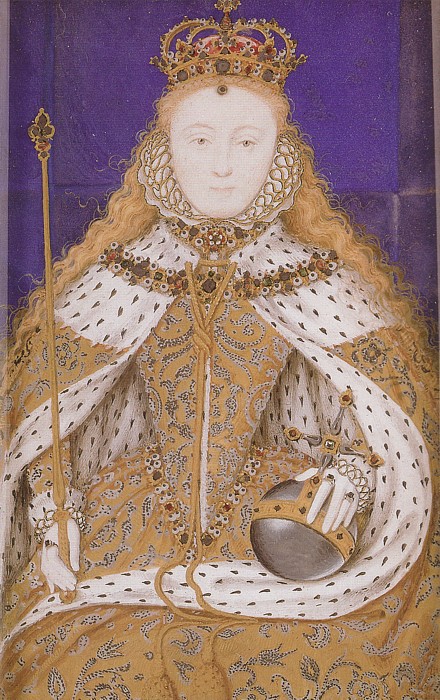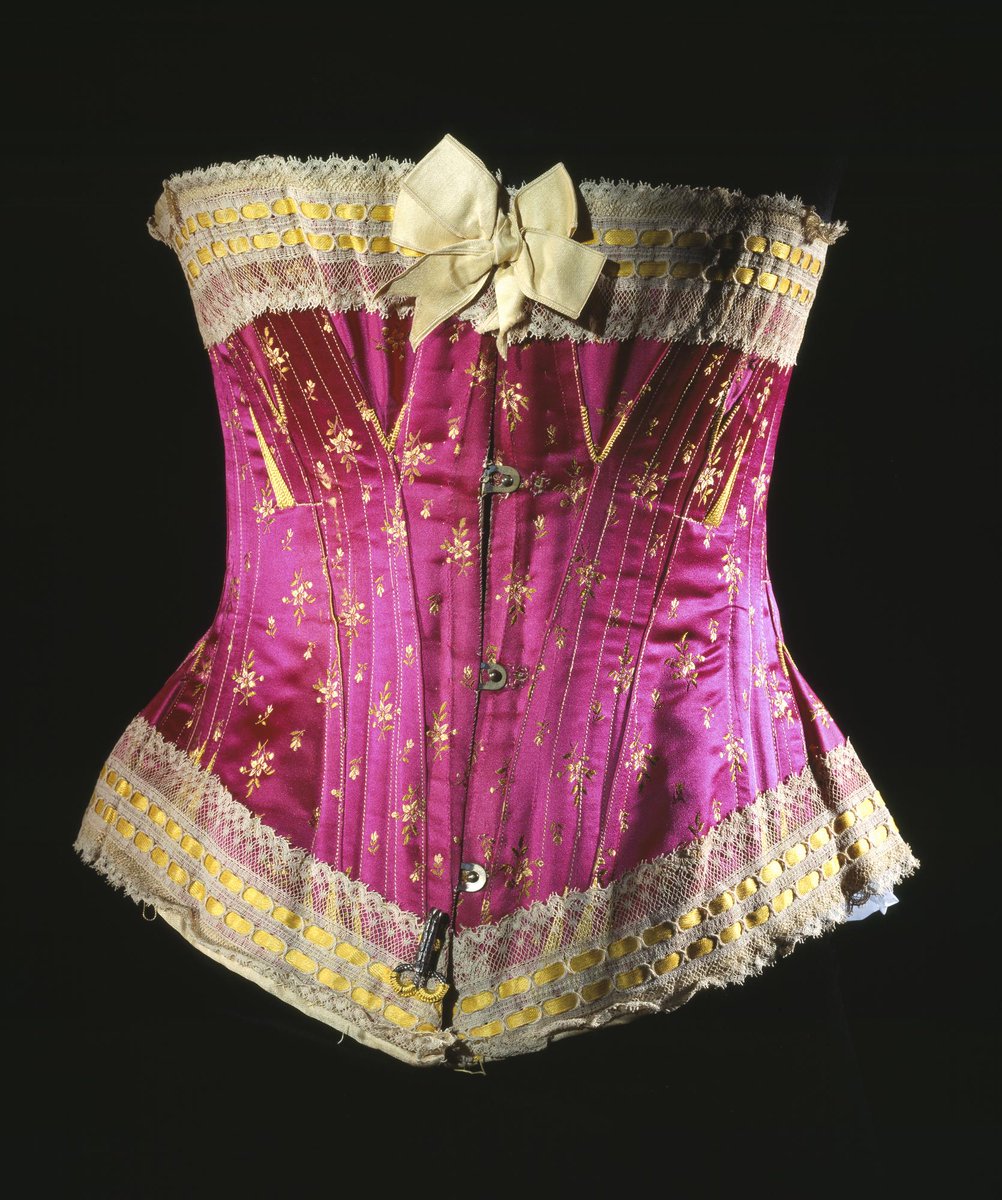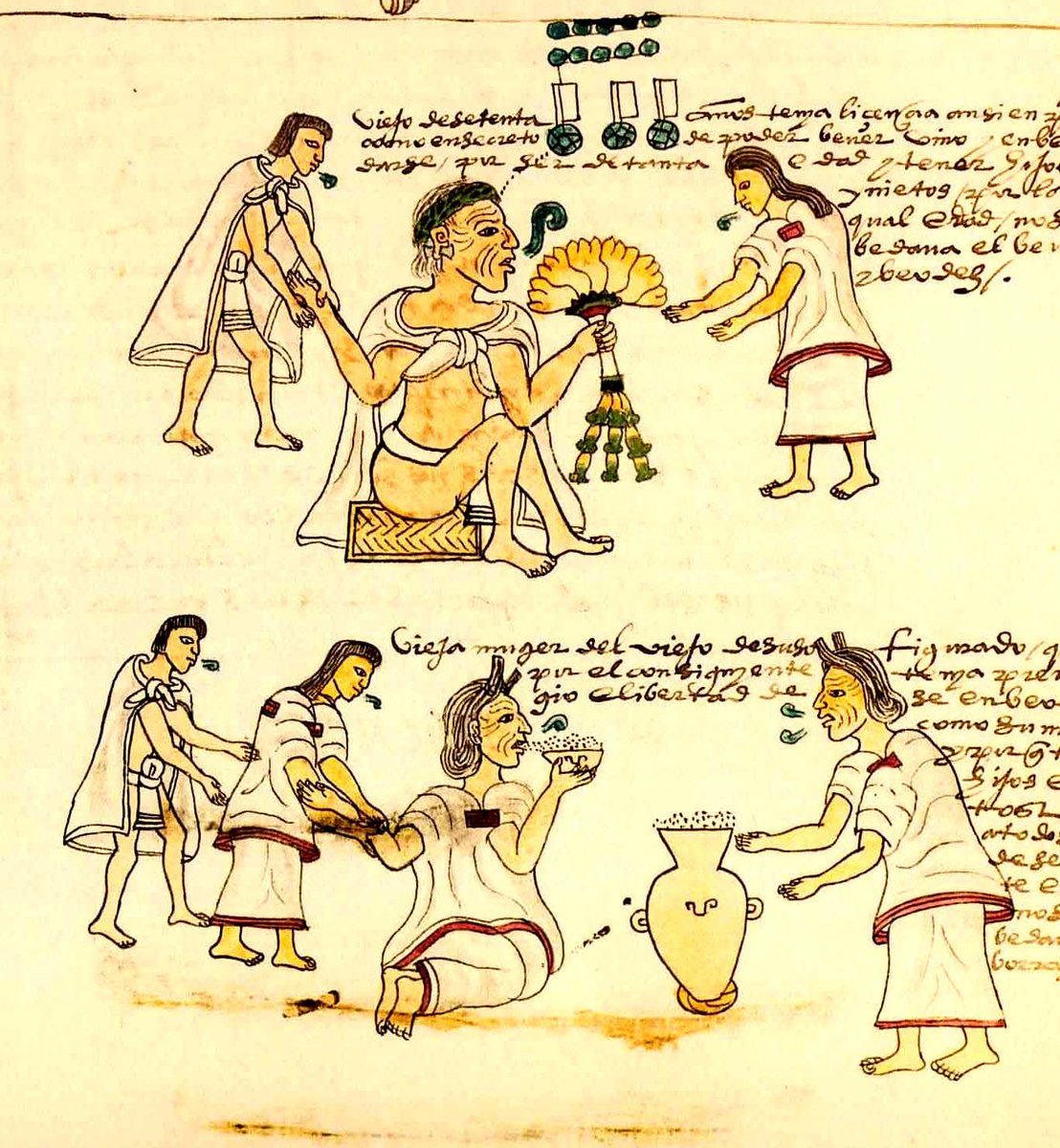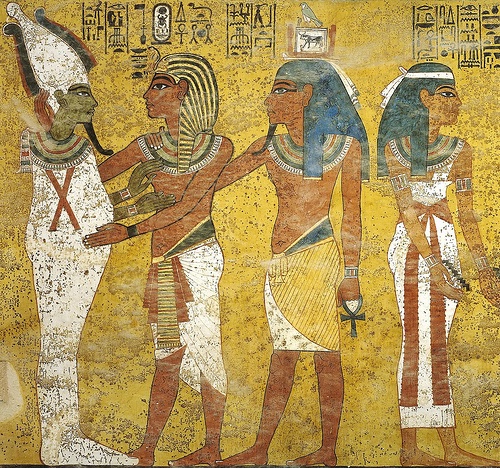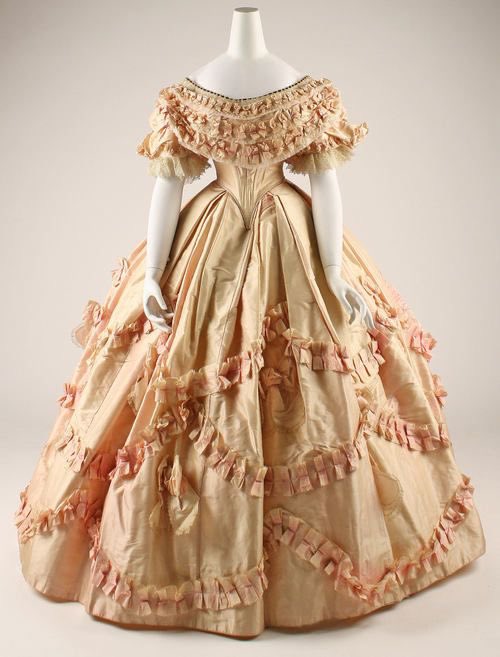
1 - It's time for #ThreadTalk & today we're swathing ourselves in the history of the kaftan!
Don't know your kaftan from your muumuu, dashiki, or Banyan? That's okay. We'll get there.
This ancient garment became a Regency staple🎩, a 1960s essential ☮️ & a modern must-have.🧥
Don't know your kaftan from your muumuu, dashiki, or Banyan? That's okay. We'll get there.
This ancient garment became a Regency staple🎩, a 1960s essential ☮️ & a modern must-have.🧥
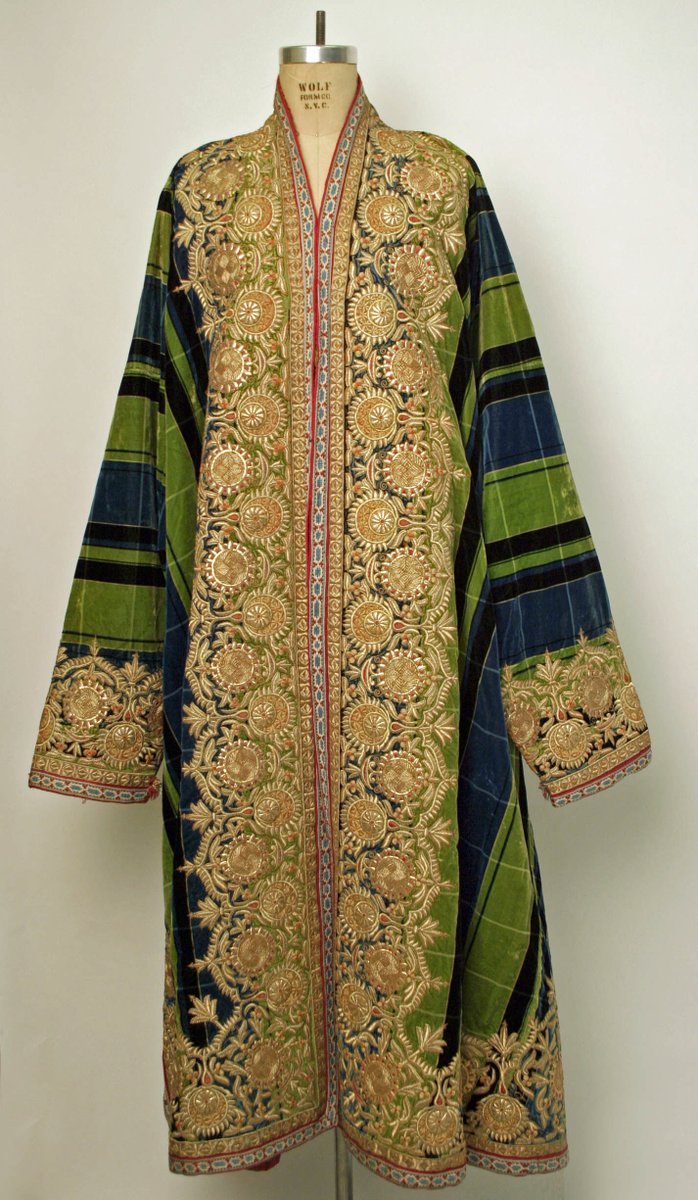
2 - The word itself is Persian: خفتان khaftān. In simple terms, it's a tunic or a robe, often open down the front & tied with a sash.
This kind of garment goes back as far as Mesopotamia, but rose to prominence during the Abbasid Caliphate. This bowl dates from the 10thC.
This kind of garment goes back as far as Mesopotamia, but rose to prominence during the Abbasid Caliphate. This bowl dates from the 10thC.

3 - That said, the garment itself emerged all over antiquity, & adapted through history. How kaftans are used, and the materials they're made from -- that's where things get sticky.
More on that later. Here's another pretty one, an entari from Turkey.

More on that later. Here's another pretty one, an entari from Turkey.


4 - The kaftan has been interpreted from Japan to Russia, Hawaii to Bangladesh. Sometimes it's tight-sleeved (like in Russia) other times it's short & wide sleeved.
This video details the still complex craft of kaftans in Morocco.
This video details the still complex craft of kaftans in Morocco.
5 - The first kaftan craze might be as early as the 9th century, when reports of Arabic-adopted designs went as far as China.
Later, Ottoman sultans wore ornately embroidered kaftans of costly brocade, silk, jewels & metals. Below: Mehmed I, Sultan of the Ottoman Empire.
Later, Ottoman sultans wore ornately embroidered kaftans of costly brocade, silk, jewels & metals. Below: Mehmed I, Sultan of the Ottoman Empire.

6 - We also think that the Rus people, living as far north as Sweden (and likely the Danes & the Anglo-Saxons) were familiar with kaftans.
Considering that coinage from the Islamic world made it all the way to places like the Silverdale Hoard (AD 900) that totally makes sense.
Considering that coinage from the Islamic world made it all the way to places like the Silverdale Hoard (AD 900) that totally makes sense.

7 - Back to the thread. (Sorry not sorry, I can't help a bit of an archaeological diversion.)
The Ottoman Empire paved way for the global adoption of the kaftan. But, really, fundamentally little has changed. See Sultan Suleiman the Magnificent below, rocking that brocade.
The Ottoman Empire paved way for the global adoption of the kaftan. But, really, fundamentally little has changed. See Sultan Suleiman the Magnificent below, rocking that brocade.
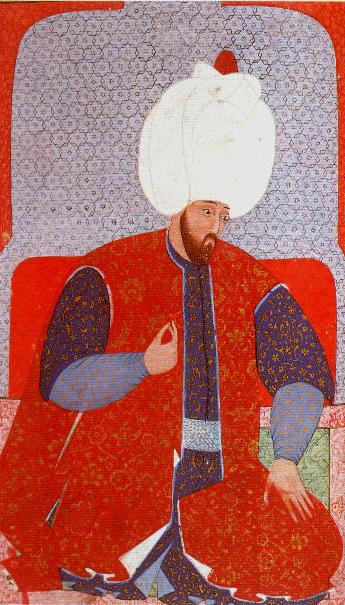
8 - In Algeria, the kaftan has been part of national dress since at least the 16thC. It's a part of traditional wedding ensembles, known as the Chedda of Tlemcen & they are AMAZING. Just all the wow.
This video captures more than I could in words!
This video captures more than I could in words!
9 - As with Algeria, kaftans came to Morocco via the Ottomans & evolved from a garment meant for sultans to every day dress.
This 20thC (PINK!) example makes use of classic textures & embellishments. But important to note: it's a living & treasured craft making kaftans today!
This 20thC (PINK!) example makes use of classic textures & embellishments. But important to note: it's a living & treasured craft making kaftans today!

10 - Throughout West Africa, we find kaftans & their relative, the dashiki, in many different countries. Often, varying colors, designs, & cuts have specific meanings. The Senegalese kaftan, or wolof, is pictured here, in a postcard from 1918. 

11 - Russia, of course, has its own kaftan, but its specifically a tighter-sleeved version. By the 19th C, the kaftan was the predominant symbol of national clothing, and has an essential place in history & folklore.
This ensemble is from the early 20thC; from the Hermitage.
This ensemble is from the early 20thC; from the Hermitage.
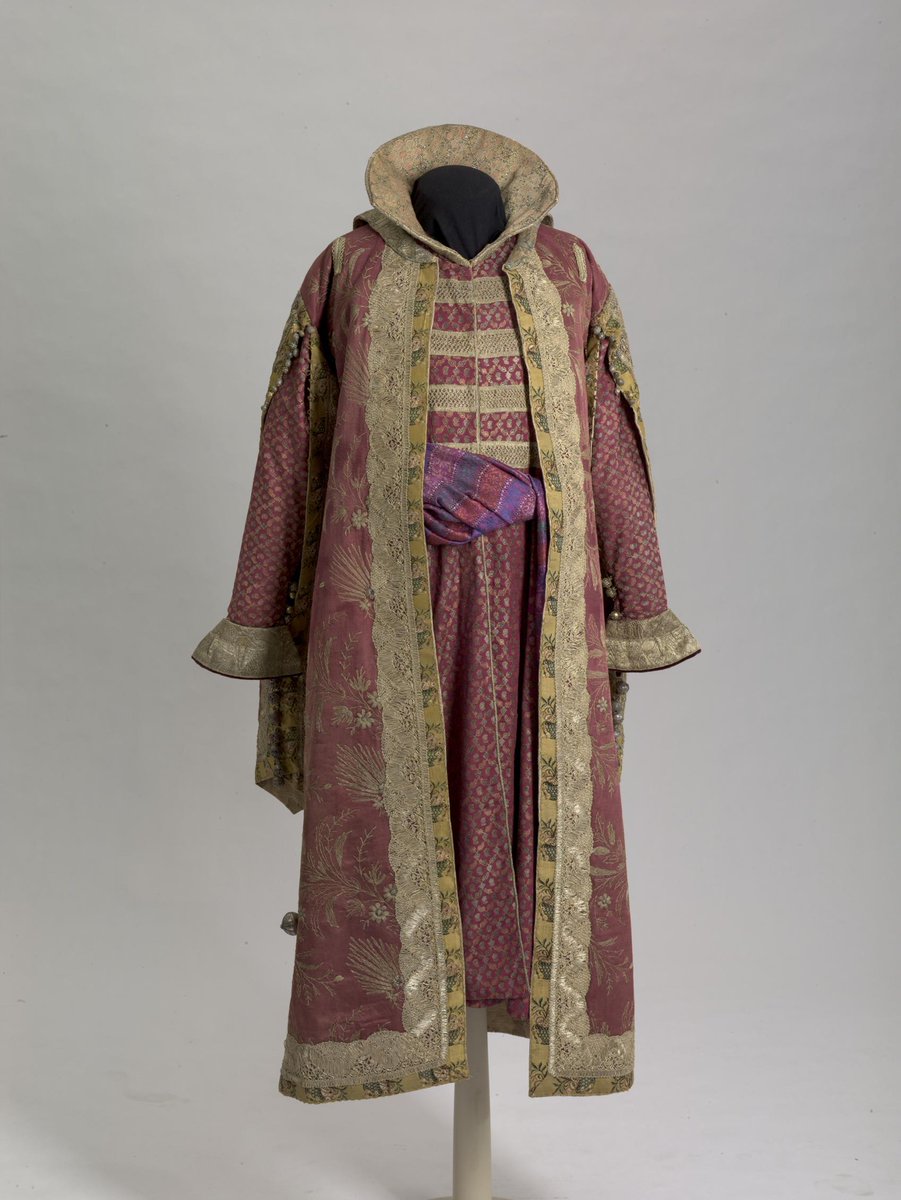
12 - And if that sounds familiar, you might be reading and/or watching #ShadowAndBone & you've heard the term "kefta."
No coincidence! The Grisha wear kaftans, each designed to represent their magical abilities, with coinciding embroidery. I love the detail, of course.
No coincidence! The Grisha wear kaftans, each designed to represent their magical abilities, with coinciding embroidery. I love the detail, of course.

13 - Poland's Krakow coats and military costumes also reflect the influence of the kaftan, as seen here. This late 19thC example is from the Museum Ethnograficzne in Krakow. 

14 - In Southeast Asia, Arab traders brought the kaftan along with their wares, and inspired all kinds of interpretations, like this pashmina choga (robe) from Kashmir, dating from the 1850s. 

15 - The ornate embroidery of India directly influenced the concept of "court dress" as we understand it; you can 100% see how that showed up later in Russia and the West. Really, "court dress" was in many ways interpretation of the royal kaftans in history. 



16 - In the West, we end up with Banyans (which, to this day, means undershirt in India)
Banyans were influenced by kimonos, which were probably inspired by kaftans! & then the colonialists took it all & DGAF about appropriation. This is a re-cut *Imperial Chinese Silk* c 1750
Banyans were influenced by kimonos, which were probably inspired by kaftans! & then the colonialists took it all & DGAF about appropriation. This is a re-cut *Imperial Chinese Silk* c 1750

17 - The Banyan becomes a point of status for wealthy men & women of Europe, a garment worn in private but with LOTS of flair.
This is one of my all-time favorites; I love that it's sort of trying to decide if it's a suit jacket. (Bonus: toile the Nantes... le sigh)
This is one of my all-time favorites; I love that it's sort of trying to decide if it's a suit jacket. (Bonus: toile the Nantes... le sigh)

18 - In Hawaii we get the muumuu. It's a kind of holokū, a garment which Protestant missionaries forced Hawaiians to wear so as not to offend their puritanical sensibilities. 🤮 Starting in the 1820s.
It has since been reclaimed. Princess Ka'iulani, below.
It has since been reclaimed. Princess Ka'iulani, below.

19 - What we think of kaftans now came to the US by way of India in the 1960s. Like with paisley, we have the Beatles & hippies to thank for that resurgence. All the big fashion houses jumped on the kaftan bandwagon.
Below from the 1920s, tho. Rights management is a beast.
Below from the 1920s, tho. Rights management is a beast.

20 - So, let's visit some of my favorite kaftans that I CAN share with you.
From the (sadly closed) Armenian Museum of France, this stunning silk number gives me palpitations. The edging on the sleeves, coupled with that metallic brocade? Hnngggh.
From the (sadly closed) Armenian Museum of France, this stunning silk number gives me palpitations. The edging on the sleeves, coupled with that metallic brocade? Hnngggh.

21 - A shorter-style kaftan, with buttons, from Turkey, dating from around the turn of the 19th C. The detail work and embroidery on this one is really where it gets me going. You could see this on the runway today, I think, no questions asked. 



22 - A French banyan, dating from 1830 or so. Gotta say, this a perfect example of "appropriation but pretty" -- because it is. Ugh.
This silk is likely from the previous century, and possibly a repurposed kimono or court robe.
This was *casual wear.*

This silk is likely from the previous century, and possibly a repurposed kimono or court robe.
This was *casual wear.*


23 - This Alanic kaftan is recreated, but how cool, right? We're talking 7-9th century here! It's still completely recognizable as a garment. You can see the care taken with the patterned silk. 

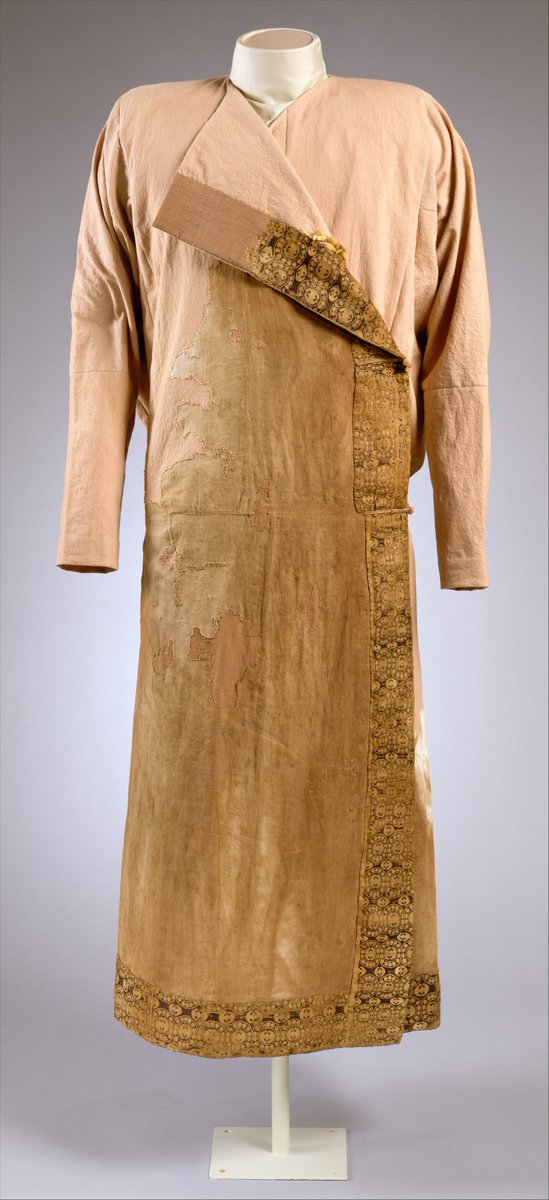

24 - Another showstopper from Turkey, this Ucetek entari and shalvar is late 19th century. I am a Tremendous Sucker for Purple Anything, and the contrasting embroidery and embellishments are whew. You can see the jewel additions, too. 


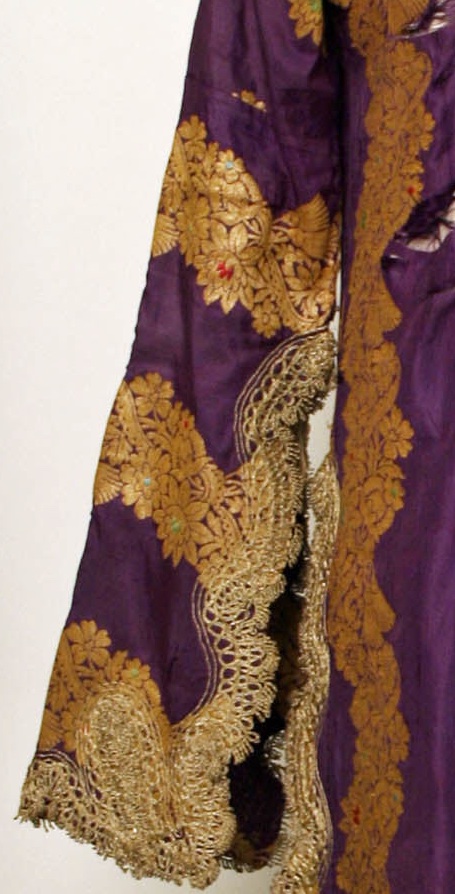
25 - Here is a kimono-inspired number, this time in blue damask, because of course? How could I not share something like this?
The loom width indicates this was woven in China, even though it dates to the late 1600s! Another item that would not look out of place today.
The loom width indicates this was woven in China, even though it dates to the late 1600s! Another item that would not look out of place today.

26 - Are kaftans singular to a nation? No. Can you wear one? Yes, but you should research it first! Fashion, for many of us, is a choice.
Remember that clothing is power, politics, beauty, art & LIVING history for many. Below: an Armenian lad from the 1600s.
Remember that clothing is power, politics, beauty, art & LIVING history for many. Below: an Armenian lad from the 1600s.

27 - You can make 70s style kaftans quite easily. They're really more like old school tunics, and require very little know how.
(Unless you're like me and you've been banned for life from all sewing machines and implements.)
See:
(Unless you're like me and you've been banned for life from all sewing machines and implements.)
See:
28 - It's time for SOURCES!
fashion-history.lovetoknow.com/clothing-types…
blog.culturalelements.com/the-history-of…
collectorsweekly.com/articles/cafta…
en.wikipedia.org/wiki/Kaftan
fashion-history.lovetoknow.com/clothing-types…
blog.culturalelements.com/the-history-of…
collectorsweekly.com/articles/cafta…
mode-et-caftan.com/gb/content/8-h…
en.vogue.me/fashion/how-th…
fashion-history.lovetoknow.com/clothing-types…
blog.culturalelements.com/the-history-of…
collectorsweekly.com/articles/cafta…
en.wikipedia.org/wiki/Kaftan
fashion-history.lovetoknow.com/clothing-types…
blog.culturalelements.com/the-history-of…
collectorsweekly.com/articles/cafta…
mode-et-caftan.com/gb/content/8-h…
en.vogue.me/fashion/how-th…
29 - More sources...
theculturetrip.com/europe/russia/…
shopmodig.com/blogs/dressing…
reconstructinghistory.com/an-ottoman-tur…
medium.com/platonic-dress…
metmuseum.org/toah/hd/otto1/…
azititou.wordpress.com/2012/09/05/faf…
dziriya.net/la-chedda-tenu…
keolamagazine.com/culture/the-ho…
theculturetrip.com/europe/russia/…
shopmodig.com/blogs/dressing…
reconstructinghistory.com/an-ottoman-tur…
medium.com/platonic-dress…
metmuseum.org/toah/hd/otto1/…
azititou.wordpress.com/2012/09/05/faf…
dziriya.net/la-chedda-tenu…
keolamagazine.com/culture/the-ho…
30 - And lastly, I can't share the image directly -- but if I could wear one right now, it would be this one.
Thanks for joining me tonight for #threadtalk! Go forth and swish.
collections.vam.ac.uk/item/O84321/ka…
Thanks for joining me tonight for #threadtalk! Go forth and swish.
collections.vam.ac.uk/item/O84321/ka…
I've been informed it's #NationalTextilesDay so this is particularly pertinent!
I forgot to include this one, which is one of *many* from Bukhara, Uzbekistan. I could do a whole thread just on the materials and patterns on caftans, because they're so lovely! This is from the 19th century, via the Met. 



If you enjoyed my #kaftan #threadtalk, you'll probably like all my other fabrications (haha). 16?!
Archive: nataniabarron.com/threadtalks/
Chintz, taffeta, Jacquard, tartan, damask, lace, velvet, embroidery, dye, muslin, beading, paisley, undergarments, Elizabeth I, & stripes!
Archive: nataniabarron.com/threadtalks/
Chintz, taffeta, Jacquard, tartan, damask, lace, velvet, embroidery, dye, muslin, beading, paisley, undergarments, Elizabeth I, & stripes!
You can't tell me that making an opossum kaftan isn't the most on brand thing I've ever considered.
spoonflower.com/en/fabric/9995…
spoonflower.com/en/fabric/9995…
Another one that I forgot to share: this is a bindalli, worn by Muslim and Jewish women as wedding garb in the Balkans and Anatolia. Front & back for max impact.
Purple & gold = heart eyes.
This is made in Turkey, late 19th century. From the Met.
JEWEL TONES.

Purple & gold = heart eyes.
This is made in Turkey, late 19th century. From the Met.
JEWEL TONES.


• • •
Missing some Tweet in this thread? You can try to
force a refresh


